This is, in my opinion at least, one of the most misunderstood rules (outside of the difference between a foul ball and foul tip) in youth baseball. Umpires and coaches at all levels of skill don't understand this rule.
It really is a simple rule if you take the time to read the rule and break it down.
Here is how the rule reads in the Major League Rulebook in Section 2:
"An INFIELD FLY is a fair fly ball (not including a line drive nor an attempted bunt) which can be caught by an infielder with ordinary effort, when first and second, or first, second and third bases are occupied, before two are out. The pitcher, chatcher and any outfielder who stations himself in the infield on the play shall be considered infielders for the purpose of this rule."
Ok lets take a look at it.
"An INFIELD FLY is a fair fly ball (not including a line drive nor an attenpted bunt)..." - This part is pretty self explanatory.
"...which can be caight by an infielder with ordinary effort..." - This is the part the gets a lot of people. This is a judgement call. The umpire has to decide when the ball is hit and it's a possible infield fly if the infielder could caugth the ball with ordinary effort. I always get the question when I explain this, "What's ordinary effort?" My answer is, if the ball can be caught without the infielder diving or running full out to get it, that's ordinary effort.
"...when first and second, or first, second and third bases are occupied, before two are out..." - Once again this is pretty self explanatory. The infield fly rule is in effort when there are runners on first and second or the bases are loaded and there are less than two outs.
"...The pitcher, catcher and any outfielder who stations himself in the infield on the play shall be considered infielders for the purposes of this rule." - This means that anyone on the field at the time of the pitch is considered an infielder.
So let's recap, the Infield Fly rule is in effect when there is a fair batted ball (not a line drive or bunt) that can be caught by an infielder with ordinary effort when there are runners on first and second or first, second and third with less than two outs.
Now here is the thing that a lot of people (coach's) either forget or don't know. Infield fly is NOT a dead ball, it is a live ball. This means that the runners can advance at their own risk but if the ball is caught they have to tag up. Also, and I can't believe how many times I have to explain this to coaches. If the ball is dropped the batter is still out and the runners DO NOT have to run. I can't begin to tell you how many times I have seen the following happen.
Runners on First and Second, one out. Batter hits a pop up to the short stop. I call infield fly, the ball is dropped, both runners take off for no reason and at least one of them gets tagged out. It happens at least twice a summer if not more.
Ok, now you understand the rule but what are the umpire mechanics on the infield fly rule? They are pretty simple. When you have decided that you are going to call infield fly, point straight up in the air and yell "INFIELD FLY, BATTER IS OUT." if the ball is near the foul line yell. "INFIELD FLY, IF FAIR, BATTER IS OUT." The only other thing you will have to do from time to time is if the ball is dropped you need to point at the batter-runner and make the out signal while yelling "HE'S STILL OUT!! HE'S STILL OUT!!!" This is one of those times as an umpire when you can't be too loud. You need to make sure everyone can hear you so they know what's going on.
Well, that's the infield fly in a nutshell. Hopefully, this info will help you when you get on the field in a couple months.
Tuesday, December 8, 2009
Subscribe to:
Post Comments (Atom)
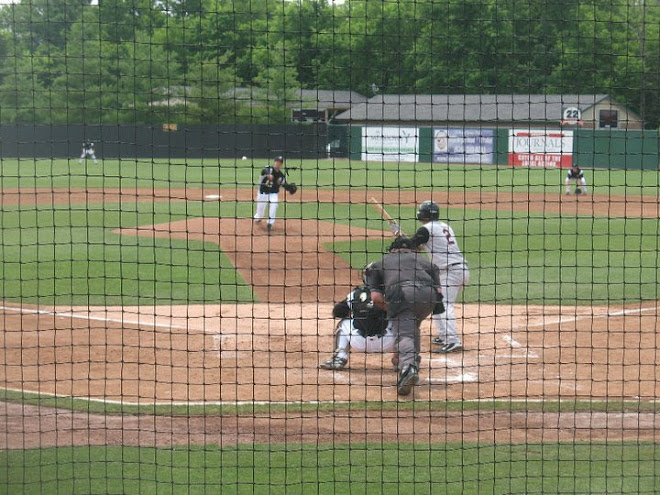
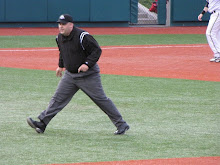


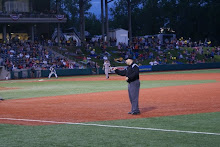
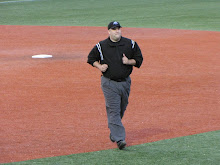
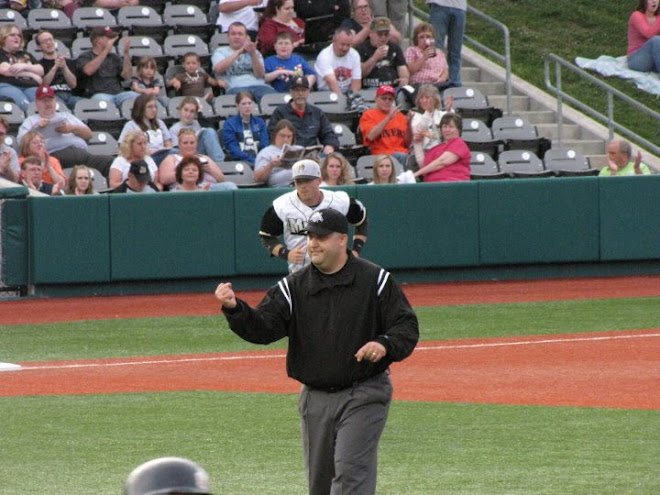
No comments:
Post a Comment